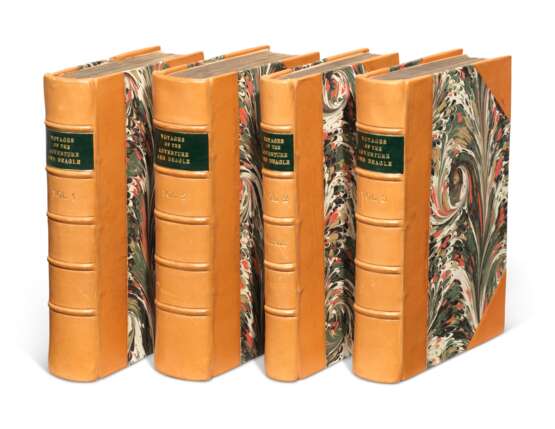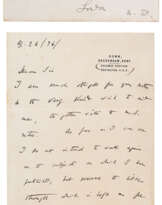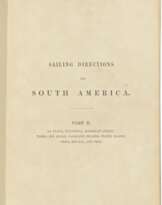ID 519382
Lot 91 | Charles Robert Darwin (1809-1882) — Robert Fitzroy (1805-1865, editor)
Valeur estimée
£ 3 000 – 5 000
Narrative of the Surveying Voyages of His Majesty's Ships Adventure and Beagle. London: Henry Colburn, 1839.
First edition of Darwin's first published book, one of the finest examples of scientific autobiography ever published. This is the Admiralty Office’s own copy, and was most probably on board HMS Nassaufor use during that ship’s expedition to survey the Straits of Magellan (1866-1869).
Darwin's Journal and Remarks 1832-1836, published as volume III in the set, was the result of Fitzroy's invitation to Darwin to contribute to the official narrative of the voyage of the Beagle. Next to the Origin, it was his most important and most popular book, leading to the opening of his first notebook on 'Transmutation of Species' in 1837. While Darwin's studies on the voyage concentrated initially on geology, the experience also aroused a desire to understand and explain the distribution and development of the species he encountered. 'The five years of the voyage were the most important event in Darwin’s intellectual life and in the history of biological science. Darwin sailed with no formal scientific training. He returned a hard-headed man of science, knowing the importance of evidence, almost convinced that species had not always been as they were since the creation but had undergone change … The experiences of his five years in the Beagle, how he dealt with them, and what they led to, built up into a process of epoch-making importance in the history of thought' (DSB). In his own words: 'The voyage of the Beagle has been by far the most important event in my life, and has determined my whole career' (Charles Darwin, Life and Letters I, p.61).
Volume I of the Narrative concerns the initial surveying expedition,1826-1830, under Phillip Parker King in the Adventure, during which FitzRoy succeeded Pringle Stokes as commander of the accompanying Beagle. Volume II describes FitzRoy’s continuation and completion of the survey with the Beagle alone, ending in 1836. ‘The surveys he carried out in South American waters established FitzRoy as a first-rate hydrographer and won for him the gold medal of the Royal Geographical Society (1837). Because his marine surveys were accurate to such a high degree they are still used as the foundation for a number of charts of that area’ (DSB).
Loosely inserted is a note by Lt-Cdr Andrew David of the Admiralty’s Hydrographic Dept indicating that the work is not only annotated by G.H. Richards, Hydrographer of the Royal Navy 1864-1874, but that very probably this very copy was taken by Captain (later Rear Admiral) Richard Charles Mayne, commander of HMS Nassau, on his survey expedition to the Straits of Magellan, 1866-1869. David notes that the ink annotations in the Appendix to vol. II are dated 1866 and agree with observations written the same hand while on board the Nassau; these observations now lie in the Hydrographic Dept archives. David also links the pencil annotation on p.325 of the Appendix to vol. II noting that the Morrice Pocket Chronometer 6144 was on board both the Beagle and the Nassau as further evidence that this copy was on board the Nassau.
4 volumes including index of vol. II, octavo (222 x 140mm). Half-titles, 7 (of 8) engraved folding maps and charts, 48 plates and charts, and 6 text illustrations (without the advertisements sometimes found at end of the appendix, lacking the map of the Keeling Islands, frontispiece to vol. I cut down and mounted and inserted after title with Admiralty Office stamp on verso, creased and soiled at top and fore-edge with associated repairs, plates mostly soiled and spotted, but with 4 plates in vol. I and one plate in vol. II in cleaner state but cut-down and probably inserted from another copy, folding maps with various tears and very small holes at creasefold joins, but without loss, blank corners of pp.519-520 in vol. I and pp.181-182 in vol. II chipped). Modern tan half morocco, black morocco gilt spine labels.
| Adresse de l'enchère |
CHRISTIE'S 8 King Street, St. James's SW1Y 6QT London Royaume-Uni | |
|---|---|---|
| Aperçu |
| |
| Téléphone | +44 (0)20 7839 9060 | |
| Commission | see on Website | |
| Conditions d'utilisation | Conditions d'utilisation |





